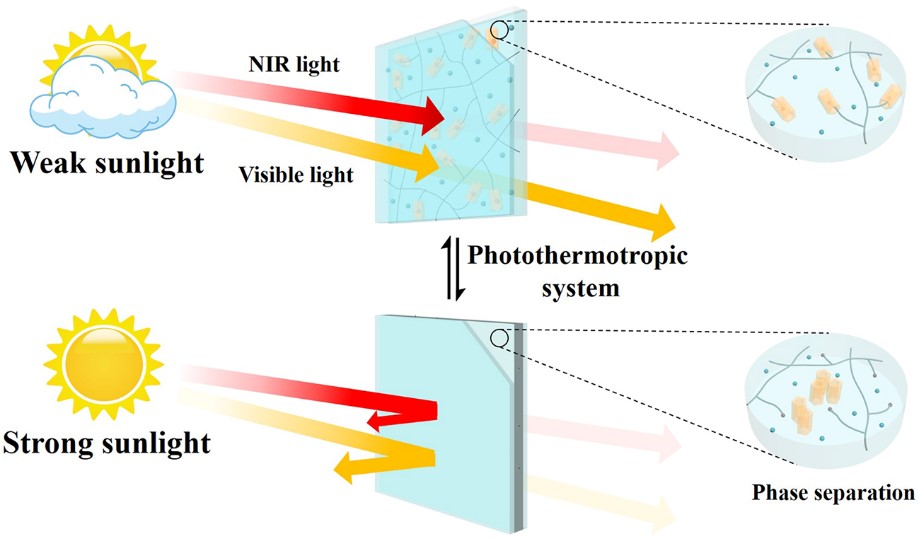With the enormous growth in global energy consumption, more effort is being invested in identifying and improving energy‐saving technologies. Smart windows constructed using supramolecular materials are one such example. Thermochromic smart windows can automatically adjust the window transparency via the ambient temperature to achieve reversible regulation of the solar transmittance that enters through the window.
Conventional thermochromic smart windows are layered with vanadium dioxide (VO2) owing to the optical contrast it confers after phase transition; however, VO2 does have a few limitations, including a high transition temperature (68 °C), low light transmittance, and an unattractive blackness, which also greatly limits its applications.
The other alternative, thermochromic hydrogels, such as poly(N-isopropylacrylamide), have demonstrated delayed responsiveness in such thermochromic devices, and therefore do not meet the requirement for achieving a comfortable indoor temperature.

A research team led by Professors Xiao-Yu Hu and Leyong Wang from Nanjing University have developed a supramolecular nanocomposite hydrogel film by integrating ethylene glycol-modified pillar[5]arene (EGP5) and antimony-tin oxide (ATO) nanoparticles.
Owing to the thermo-responsiveness of EGP5 and the plasmonic heating effect induced by the near infrared absorption spectrum of ATO, the obtained supramolecular film exhibits an outstanding photo-thermochromic effect. Upon being irradiated with a xenon lamp at 100 mW·cm-2 for 10 minutes, the film heats up to 32.1 °C via the ATO nanoparticles, transforming the transparent film into an opaque coating.
The hydrogel demonstrates both excellent solar energy modulation and luminous transmittance. Moreover, the dynamic and reversible nature of the host-guest interaction between EGP5 and the pyridinium‐modified polyacrylamide network prevents the collapse and damage of the hydrogel structure (a common drawback seen in previously proposed thermosensitive polymers), leading to high repeatability and durability of the obtained photo-thermochromic film.
The authors believe that this supramolecular film could be further applied to the fabrication of smart windows that can preferentially trigger its sunlight-induced photo-thermochromic effect to achieve a cool indoor temperature. The team hopes to continue focusing on the investigation of smart windows constructed based on a supramolecular strategy, and eventually develop novel smart windows made of color-changeable supramolecular materials.

















